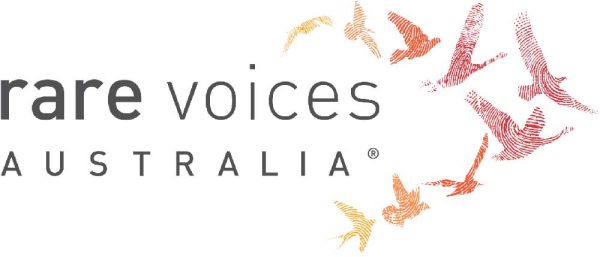Acalvaria
Quick Search
- Summary
- Synonyms and Classifications
- Symptoms
- Disability Impacts
- Cause and Inheritance
- Diagnosis
- Treatment
- Clinical Care Team
- Clinical Care Guidelines
- Emergency Management
- Research
- Rare Disease Organisation(s)
- Lived Experience
- Support Services and Resources
- Mental Health
- Other Information
- Useful Links for Healthcare Professionals
Summary
Acalvaria is a birth defect (congenital condition) where the top of the skull (the calvaria) has not developed properly, resulting in absence of the flat skull bones of the brain, the membrane under the skull bone (dura mater), and scalp muscles.1,2 There is still an intact layer of skin over the brain tissue (parenchyma).2,3 The size of the area that is missing can differ between individuals,2 and can range from partial to complete absence.4 The base of the skull and facial bones are usually not affected.1,2
The exact cause of acalvaria is currently unknown.1,2 There has not been many cases of acalvaria reported in the medical literature.3-6 Acalvaria is a severe condition and may be fatal at birth in some cases. There are also reports of children living with this condition.4,6
Synonyms and Classifications
There are no known synonyms.
Universal rare disease classifications provide a common language for recording, reporting and monitoring diseases. Please visit the Rare Disease Classifications page for more information about these internationally recognised classifications.
Symptoms
Acalvaria is characterised by the absence of the flat skull bones of the brain, the membrane under the skull bone (dura mater), and scalp muscles.1,2 The size of the missing area can vary between individuals, ranging from partial to complete absence.4 There is still an intact layer of skin over the brain tissue (parenchyma)2,3 and the base of the skull and facial bones are usually not affected.1
Acalvaria has been reported to be fatal at birth in many cases. Children living with acalvaria may have intellectual disability.
Please speak to your medical team to learn more about the features of acalvaria.
Disability Impacts
Rare diseases are often serious and progressive, exhibiting a high degree of symptom complexity, leading to significant disability. Majority of the estimated two million Australians living with a rare disease meet the Australian Government’s definition for disability (in accordance to the Australian Public Service Commission and Australian Bureau of Statistics), and many experience severe and permanent disability impacts. If you or someone you care for is experiencing disability-related impacts from a rare condition, please speak with a health or disability professional for advice. Information about relevant disability support can be found at the RARE Portal’s Disability Support Information page.
Cause and Inheritance
The cause for acalvaria is currently unknown.1,2
Diagnosis
Prenatal diagnosis of acalvaria may be made using ultrasonography, with magnetic resonance imaging (MRI) used for confirmation as the condition can be mistaken for anencephaly or encephalocele.2
Neuroimaging, such as cranial ultrasonography, noncontrast computerised tomography (CT) and MRI, may be performed on newborns for detailed evaluation.4
Please speak to your medical team to learn more about the available diagnostic pathways for acalvaria.
Treatment
There is currently no curative treatment for acalvaria. Treatment may be limited due to the severity of this condition.
Please speak to your medical team to learn more about the possible treatment or management options for your condition. Treatment will depend on an individual’s specific condition and symptoms. It is also important to stay connected to your medical team so that you can be made aware of any upcoming clinical trial opportunities.
Clinical Care Team
Clinical care for rare diseases often involves a multidisciplinary team of medical, care and support professionals. Please note that the information provided here is as a guide and that RVA does not necessarily monitor or endorse specific clinics or health experts.
Medical professionals involved in the treatment or management of acalvaria may include general practitioners (GP), paediatricians and neurosurgeons. However, the need for different specialists may change over time and may extend beyond those listed here.
Clinical Care Guidelines
We are not aware of any clinical care guidelines for acalvaria in Australia. If you know of any relevant care guidelines, please let us know via the Contribute page.
Emergency Management
Individuals living with rare diseases may have complex medical issues and disabilities, which are not always visible. It is often useful to refer to their medical history as well as personal information such as a medical card, doctor’s letter, or if available, a rare disease passport, for relevant information.
Research
There are specific considerations around participating in rare disease research, including clinical trials. It is important to be mindful of issues such as data privacy, research ethics, consent and differences in research regulations between Australia and other countries.
If you are interested in finding clinical trials for your condition, please visit the following websites; however, there may not be any clinical trials available:
It is best to discuss your interest in any clinical trials with your medical team to determine suitability and eligibility.
Please note that RVA does not necessarily monitor or endorse each group/organisation’s operational governance and activities.
Rare Disease Organisation(s)
There are currently no known organisations for acalvaria in Australia. If you are aware of any Acalvaria organisations in Australia, please let us know via the Contribute page.
Please note that RVA does not monitor or endorse each group/organisation’s operational governance and activities. When engaging with a group, please consider the information on the RARE Portal’s Finding Helpful Peer and Community Supports page.
Lived Experience
Acalvaria varies between individuals, and each person’s experience is unique.
If you would like to share your personal story with RVA, please visit the Rare Voices Australia: Share Your Story page. RVA will consider your story for publishing on our website and inclusion on the RARE Portal.
Support Services and Resources
For information on available government and social services that provide support for individuals with a rare disease, please visit the National and State Services pages.
Mental Health
People living with a rare disease, including families and carers, often face unique challenges such as diagnostic delays, misdiagnoses, limited treatment options, and limited access to rare disease specialists and support. These challenges may impact people’s emotional wellbeing and quality of life. Many people find it helpful to seek mental health and wellbeing support to cope with ongoing stress and uncertainty. Connecting with people who have shared experiences through a support group may also be helpful. Information about relevant mental health and wellbeing support can be found at:
- Mental Health and Wellbeing Support for Australians Living with a Rare Disease
- The National and State Services pages underneath the ‘Mental Health’ sections listed
Other Information
Further information on acalvaria can be found at:
Useful Links for Healthcare Professionals
References
- Genetic and Rare Diseases Information Center. Acalvaria. Accessed 20 September 2022. https://rarediseases.info.nih.gov/diseases/361/acalvaria
- Orphanet. Acalvaria. Accessed 20 September 2022. https://www.orpha.net/en/disease/detail/945
- Harris CP, Townsend JJ, Carey JC. Acalvaria: A Unique Congenital Anomaly. Am. J. Med. Genet. 1993;46(6):694-9. https://doi.org/10.1002/ajmg.1320460620
- Faizan R, Tomar M, Usmani Y. Primary acalvaria an orphan disease: Case report and review of literature. J. Pediatr. Neurosci. 2023; 18(3):242-245. https://pediatricneurosciences.com/preprintarticle.asp?id=368796
- Hawasli AH, Beaumont TL, Vogel TW, Woo AS, Leonard JR. Acalvaria. J. Neurosurg. Pediatr. 2014; 14(2):200-2. https://doi.org/10.3171/2014.5.PEDS13688
- Ouma JR. Acalvaria – report of a case and discussion of the literature. Br. J. Neurosurg. 2019; 33(2):224-225. https://doi.org/10.1080/02688697.2017.1322685
Contributors
This page has been developed by Rare Voices Australia’s RARE Portal team.
If you are aware of any additional information that may benefit stakeholders with an interest in this page, or if you notice any broken links or inaccurate information, please let us know via the Contribute page.

